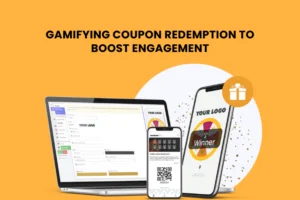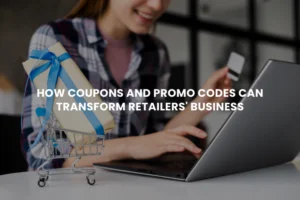
Crafting a Winning Loyalty Program Strategy for U.S. Retailers
- Understanding Your Customer Base
- Setting Clear Objectives
- Designing a Compelling Rewards Structure
- Leveraging Technology for Seamless Integration
- Personalizing Customer Interactions
- Incorporating Gamification Elements
- Ensuring Transparency and Ease of Use
- Promoting Your Loyalty Program Effectively
- Measuring and Optimizing Your Program
- Adapting to Industry Trends and Innovations
In the highly competitive retail market, loyalty programs have become essential tools for building customer retention and driving sales. A well-designed loyalty program can create long-term relationships with customers, encourage repeat purchases, and provide valuable data for business insights. Here’s a comprehensive guide on crafting a winning loyalty program strategy for U.S. retailers.
1. Understanding Your Customer Base
The first step in crafting a successful loyalty program is understanding your customer base. Conduct thorough market research to identify customer preferences, shopping behaviors, and pain points. Segment your customers based on demographics, purchasing habits, and engagement levels. This data will help you tailor your loyalty program to meet the specific needs and expectations of different customer segments. Retailers like Macy’s use advanced analytics to understand their diverse customer base and create personalized loyalty offers that resonate with each segment.
2.Setting Clear Objectives
Before launching a loyalty program, it’s crucial to set clear, measurable objectives. Define what you want to achieve with your loyalty program, whether it’s increasing repeat purchases, boosting average order value, or enhancing customer engagement. Having clear objectives will guide the design and implementation of your loyalty program and help you measure its success. For example, Starbucks’ Rewards program aims to drive repeat visits and increase spending per visit, and it has been highly effective in achieving these goals.
3. Designing a Compelling Rewards Structure
A compelling rewards structure is at the heart of any successful loyalty program. Offer a mix of rewards that appeal to your customers, such as discounts, freebies, exclusive access to events, and personalized offers. Consider implementing a tiered rewards system where customers unlock higher rewards as they spend more. This not only motivates customers to increase their spending but also creates a sense of achievement. Sephora’s Beauty Insider program, with its tiered structure, is a great example of how to keep customers engaged and striving for higher rewards.
4.Leveraging Technology for Seamless Integration
Incorporating technology into your loyalty program can enhance the customer experience and streamline program management. Utilize mobile apps, digital wallets, and online platforms to allow customers to easily access their rewards, track their points, and receive personalized offers. Ensure that your loyalty program is seamlessly integrated across all channels, including in-store, online, and mobile. Target’s Circle program excels in this area, providing a unified experience where customers can earn and redeem rewards regardless of how they shop.
5.Personalizing Customer Interactions
Personalization is key to a successful loyalty program. Use the data collected through your loyalty program to create personalized marketing campaigns, tailored product recommendations, and customized rewards. Personalization makes customers feel valued and appreciated, leading to increased loyalty and engagement. For instance, Nordstrom uses data from its loyalty program to send personalized emails with product recommendations and exclusive offers, enhancing the overall customer experience.
6. Incorporating Gamification Elements
Adding gamification elements to your loyalty program can make it more engaging and fun for customers. Implement challenges, competitions, and achievement badges to motivate customers to participate and interact with your brand. Gamification not only boosts customer engagement but also encourages customers to spend more to reach higher levels of rewards. NikePlus, Nike’s loyalty program, uses gamification to keep customers engaged through fitness challenges and competitions, fostering a strong sense of community among its members.
7. Ensuring Transparency and Ease of Use
A successful loyalty program should be easy to understand and use. Clearly communicate how customers can earn and redeem rewards, and ensure that the process is straightforward and hassle-free. Transparency builds trust and encourages more customers to join and actively participate in your loyalty program. Walmart’s Rewards program is known for its simplicity and transparency, making it easy for customers to understand and engage with.
8. Promoting Your Loyalty Program Effectively
Effective promotion is crucial to the success of your loyalty program. Use multiple channels, including email, social media, in-store signage, and your website, to promote your program and its benefits. Highlight the value of joining and the exclusive rewards customers can earn. Consider offering a sign-up bonus to encourage new customers to join. CVS Pharmacy promotes its ExtraCare program through various channels, ensuring that customers are aware of the benefits and how to participate.
9. Measuring and Optimizing Your Program
Regularly measure the performance of your loyalty program against your set objectives. Use key performance indicators (KPIs) such as customer retention rates, average order value, and program engagement levels to assess the effectiveness of your program. Gather feedback from customers to identify areas for improvement. Continuously optimize your program based on the insights gained to ensure it remains relevant and effective. Kroger’s loyalty program continuously evolves based on customer feedback and data analysis, ensuring it meets the changing needs of its customers.
10. Adapting to Industry Trends and Innovations
Crafting a winning loyalty program strategy involves understanding your customers, setting clear objectives, designing a compelling rewards structure, leveraging technology, and personalizing customer interactions. By incorporating gamification, ensuring transparency, promoting effectively, measuring performance, and adapting to industry trends, U.S. retailers can create loyalty programs that drive customer engagement, increase retention, and boost sales. With a well-crafted loyalty program, retailers can build long-lasting relationships with their customers and thrive in the competitive retail market.
Conclusion
Crafting a winning loyalty program strategy involves understanding your customers, setting clear objectives, designing a compelling rewards structure, leveraging technology, and personalizing customer interactions. By incorporating gamification, ensuring transparency, promoting effectively, measuring performance, and adapting to industry trends, U.S. retailers can create loyalty programs that drive customer engagement, increase retention, and boost sales. With a well-crafted loyalty program, retailers can build long-lasting relationships with their customers and thrive in the competitive retail market.




